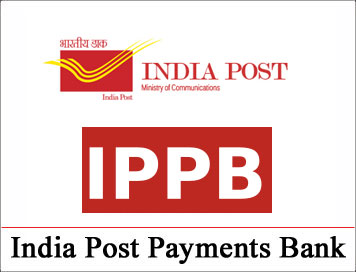
(FAQ) India Post Payments Bank (IPPB)
Concept of Payments Bank
1. What is a Payments Bank?
A Payments Bank is a “differentiated bank” set-up under the
guidelines issued on Nov 27, 2014 by the Reserve Bank of India (RBI) to further
financial inclusion for the underserved population by providing (i) current and
savings accounts and (ii) payments or remittance services to migrant labour
workforce, low income households, small businesses, unorganised sector entities
and other users. This is to be done by enabling high volume-low value
transactions in deposits and payments or remittance services in a secure
technology-driven environment.
Please click on this link for further details:
https://www.rbi.org.in/Scripts/BS_PressReleaseDisplay.aspx?prid=32615 (RBI
Guidelines)
2. Why is a Payments Bank required?
A vast majority of the rural population (over 60%, as per
RBI), is still unbanked or underbanked. An easily accessible payments network
and universal access to savings is fundamental to financial inclusion. At the
same time, several non-banking entities such as the Department of Posts (DoP),
prepaid payment instrument companies, business correspondent companies, etc.,
have had reasonable success in facilitating payments and other select financial
services in urban areas. Their customers, however, face several limitations and
difficulties arising out of their nonbanking status. Of particular note amongst
these is the DoP which has a wide network and experience of handling financial
transactions, but does not have a banking license. Given their potential to
further the cause of financial inclusion, the RBI granted such entities a
differentiated banking license, i.e. a payments bank license, which enables
these entities to provide banking services other than credit. Credit and
insurance are as integral to financial inclusion as are other banking services,
and payments bank can offer these products as well but only in partnership with
other banks/ insurers and on a non-risk sharing basis.
3. What is the scope and activities of the Payments Bank?
As per the RBI Guidelines, the payments bank will be set up
as a differentiated bank and shall be permitted to set up its own outlets such
as branches, Automated Teller Machines (ATMs), Business Correspondents (BCs),
etc. to undertake only certain restricted activities permitted to banks under
the Banking Regulation Act, 1949, as given below:
- Acceptance of demand deposits, i.e., current deposits, and savings bank
deposits from individuals, small businesses and other entities, as
permitted. The payments bank will be restricted to holding a maximum balance
of Rs. 1,00,000 per individual customer.
- Issuance of ATM / Debit Cards. Payments banks, however, cannot issue
credit cards.
- Payments and remittance services through various channels including
branches, Automated Teller Machines (ATMs), Business Correspondents (BCs)
and mobile banking.
- Issuance of PPIs as per instructions issued from time to time under the
PSS Act.
- Internet and mobile banking - The payments bank is expected to leverage
technology to offer low cost banking solutions.
- Functioning as Business Correspondent (BC) of another bank – a payments
bank may choose to become a BC of another bank, subject to the RBI
guidelines on BCs.
- As a channel, the payments bank can accept remittances to be sent to or
receive remittances from multiple banks under a payment mechanism approved
by RBI, such as RTGS / NEFT / IMPS.
- Payments banks will be permitted to handle cross border remittance
transactions in the nature of personal payments or remittances on the
current account.
- Payments banks can undertake other non-risk sharing simple financial
services activities, not requiring any commitment of their own funds, such
as distribution of mutual fund units, insurance products, pension
products, etc. with the prior approval of the RBI and after complying with
the requirements of the sectoral regulator for such products.
- The payments bank may undertake utility bill payments etc. on behalf of
its customers and general public.